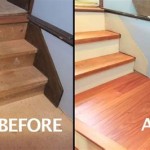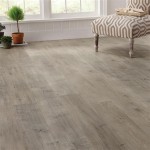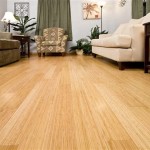How Wide Is A Roll Of Vinyl Flooring?
Vinyl flooring, a popular choice for both residential and commercial spaces, offers durability, water resistance, and a wide array of design options. One of the key considerations when planning for vinyl flooring installation is the width of the rolls available. Understanding standard widths is essential for minimizing seams, reducing waste, and ultimately achieving a professional-looking finished floor. The width of vinyl flooring rolls can vary, impacting installation methods, cost estimation, and the overall aesthetic of the room. This article will explore the typical widths available, factors influencing these widths, and how to choose the appropriate width for a specific project.
Vinyl flooring is manufactured in continuous rolls, then cut to specific lengths based on customer requirements. This roll format allows for the coverage of large areas with fewer interruptions compared to other flooring options like tiles or planks. The production process, involving the application of multiple layers to a backing material, lends itself well to creating wide, seamless expanses of flooring. The industry has standardized certain widths to optimize manufacturing efficiency, transportation, and installation practicality. Knowing these standard widths allows consumers and contractors to make informed decisions and efficiently plan their flooring projects.
The composition of vinyl flooring also influences its available widths. Vinyl flooring consists of multiple layers, including a wear layer, a design layer, and a backing layer. The wear layer, responsible for the flooring's durability and resistance to scratches and stains, is often made of a transparent vinyl material. The design layer, which provides the visual appearance of the flooring, can mimic a variety of materials, such as wood, stone, or tile. The backing layer provides stability and cushioning. The manufacturing process that binds these layers together under heat and pressure is optimized for specific widths, contributing to the standardization of roll sizes. Thicker, more durable vinyl flooring may have width limitations compared to thinner, more flexible options. Variations in the manufacturing process and the incorporation of specialized features, such as enhanced waterproofing or textured surfaces, can also affect the available widths.
Understanding Standard Vinyl Flooring Roll Widths
The most common widths for vinyl flooring rolls typically range from 6 feet (72 inches) to 13.2 feet (158.4 inches). These widths are often expressed in metric units as well, with common sizes being approximately 2 meters (6.56 feet) and 4 meters (13.12 feet). Within this range, certain widths are more readily available and considered standard. The prevalence of these standard widths is driven by factors such as manufacturing efficiency, transportation logistics, and the dimensions of typical rooms. The availability of "standard" widths can vary regionally and depending on the manufacturer.
Rolls that are 6 feet wide are frequently used in smaller rooms or areas, such as bathrooms, closets, or hallways. This narrower width is easier to handle and maneuver in tight spaces. Rolls that are 12 feet wide are generally used in larger rooms, such as living rooms, bedrooms, or kitchens. This wider width minimizes the number of seams required, resulting in a more visually appealing and potentially more durable floor. Rolls wider than 12 feet are typically utilized in commercial settings or very large residential spaces where minimizing seams is paramount. These wider rolls offer the advantage of covering significant square footage with minimal interruptions, but they also present challenges in terms of handling, cutting, and installation.
Specialty widths, beyond the standard range, may be available from certain manufacturers or distributors. These non-standard widths are often produced on demand or for specific projects where a custom fit is required. Specialty widths can also be useful for minimizing waste in irregularly shaped rooms or when matching existing flooring. However, specialty widths typically come at a higher cost and may have longer lead times for delivery. Sourcing non-standard widths requires careful planning and coordination with the flooring supplier to ensure compatibility with the intended application and installation method.
It is important to note that the actual usable width of a vinyl flooring roll may be slightly less than the stated width due to edge trimming and manufacturing tolerances. When ordering vinyl flooring, it is advisable to account for this potential variation and order slightly more material than the calculated square footage to ensure adequate coverage. Consulting with a professional flooring installer is recommended to accurately assess the material requirements and minimize waste.
Factors Influencing Vinyl Flooring Width Selection
The dimensions of the room or area where the vinyl flooring will be installed are the primary determinant of the appropriate roll width. Measuring the length and width of the room is crucial to determine how many seams will be required with different roll widths. Opting for a width that minimizes or eliminates seams is often desirable, as seams can be a potential point of weakness and can detract from the overall appearance of the floor. Careful consideration of room dimensions can lead to reduced material waste and a more aesthetically pleasing result.
Beyond the size of the room, the shape of the room can also influence width selection. Irregularly shaped rooms with alcoves, angles, or curves may require more careful planning and cutting to minimize waste. In such cases, a narrower roll width may be more manageable and allow for more efficient use of the material. Conversely, in a large, open-concept space with few obstructions, a wider roll width may be the most efficient choice, as it allows for the coverage of large areas with minimal seaming. Accurately mapping the room's layout and accounting for any irregularities is essential for determining the most suitable roll width.
The cost of the vinyl flooring material is also a significant factor in width selection. While wider rolls generally offer the advantage of fewer seams, they may also be more expensive per square foot than narrower rolls. Consider the trade-off between the cost of the material, the labor cost for installation, and the potential for waste. Minimizing seams can reduce the labor cost associated with seam sealing and potentially extend the lifespan of the floor. However, if waste is significantly higher with a wider roll, the overall cost-effectiveness may be diminished. Comparing prices for different widths and calculating the total cost of the project, including material, installation, and waste disposal, is crucial for making an informed decision.
The subfloor condition and preparation requirements can also affect the selection of vinyl flooring width. An uneven or damaged subfloor may require extensive preparation, such as patching, leveling, or applying an underlayment. In some cases, a wider vinyl flooring roll may be less forgiving of imperfections in the subfloor, as it is more likely to conform to the contours of the surface. A narrower roll may offer more flexibility and adaptability to variations in the subfloor. Consulting with a flooring professional to assess the subfloor condition and recommend appropriate preparation measures is essential for ensuring a successful installation.
Installation Considerations and Width Choices
The complexity of the installation process is another factor to consider when selecting vinyl flooring roll width. Wider rolls can be more challenging to handle and maneuver, especially in confined spaces or around obstacles. Installation often requires two or more people to properly position and secure the material. Narrower rolls are generally easier to manage and install, particularly for DIY projects. The level of skill and experience of the installer, whether a professional or a homeowner, should be taken into account when determining the appropriate roll width.
The type of adhesive used and the method of application also play a role in the installation process and may be influenced by the width of the vinyl flooring. Some adhesives are designed for specific roll widths or installation methods, such as perimeter bonding or full spread adhesion. The recommended adhesive and application method should be followed carefully to ensure proper bonding and prevent issues such as bubbling, lifting, or seam separation. Wider rolls typically require more adhesive and a more meticulous application process to ensure uniform bonding across the entire surface.
Seam treatment is a critical aspect of vinyl flooring installation, particularly when using multiple rolls. Seams must be properly sealed to prevent moisture penetration and ensure a seamless appearance. The type of seam treatment required may vary depending on the type of vinyl flooring, the adhesive used, and the specific application. Heat welding is a common method for sealing seams in commercial applications, while chemical bonding agents are often used in residential settings. The width of the vinyl flooring can influence the number of seams and the complexity of the seam treatment process. Minimizing seams through the selection of an appropriate width can simplify the installation process and reduce the potential for seam-related issues.
Furthermore, consider the long-term maintenance and care requirements of the vinyl flooring. Seams, even when properly sealed, can be more susceptible to wear and tear than the rest of the flooring surface. Regular cleaning and maintenance are essential to prevent dirt and debris from accumulating in the seams and compromising the integrity of the seal. Choosing a width that minimizes seams can reduce the overall maintenance effort and extend the lifespan of the floor. The decision on roll width, therefore, impacts not only the initial installation but also the long-term performance and appearance of the vinyl flooring.

Trafficmaster Rustic Rectangular Slate Clay Stone Residential Vinyl Sheet Flooring 10 Mil 12ft Wide X Cut To Length U4990 407c917p144 The Home Depot

Pvc Vinyl Flooring Roll 6 5mm At 110 Sq Ft Borivali Mumbai Id 22195902062

Dark Forrest Oak Vinyl Lino Roll Flooring 2m 4m Width Kitchen Bathroom

Shaw Cascades 12 Wide Vinyl Sheet

Scarlet Oak Vinyl Lino Roll Flooring 2m 4m Width Kitchen Bathroom

Trafficmaster Golden Oak Residential Vinyl Sheet Flooring 5 Mil 12 Ft Wide X Cut To Length U9160405k764g14 The Home Depot

Plastic Multicolor Vinyl Flooring Roll Size 2 Mtr At 25 Square Feet In Jaipur

Plastic Flooring Pvc Vinyl Roll Up Linoleum Rubber Wide Clear Car Mat Anti Bacterial Carpet Out Floor Made In China Com

Jeedeson 6 Mil X 3 28 Ft W Cut To Length Waterproof Vinyl Sheet Flooring Original Wood Grain Covered 53 82 Sq Box Jds Zm0201 15 The Home Depot

Fes Grey Sheet Vinyl Flooring 3 Metre Wide Roll 118
Related Posts








